In today’s fast-paced digital world, cloud computing isn’t just a buzzword—it’s the backbone of modern business. Imagine having access to your files, applications, and data from anywhere, anytime, without the hassle of bulky hardware. That’s the magic of the cloud! It’s like having a virtual office that fits in your pocket, minus the coffee stains and awkward water cooler chats.
Table of Contents
ToggleOverview of Cloud Computing
Cloud computing revolutionizes how businesses operate by providing scalable solutions for data storage and processing. Organizations can access resources through the internet, reducing reliance on physical infrastructure. Convenience stands out as a primary benefit, allowing users to manage files and applications from various devices without geographical constraints.
Cost efficiency plays a significant role as well. By utilizing cloud services, businesses can minimize upfront investments in hardware and software. Pay-as-you-go pricing models enable organizations to only pay for what they use. Such models foster financial flexibility, aiding startups and established enterprises alike to allocate resources effectively.
Security remains a paramount concern in cloud computing. Many providers offer robust data encryption, identity management, and compliance features. These security measures help protect sensitive information, ensuring that organizations meet regulatory standards and maintain customer trust.
Collaboration among teams enhances productivity. Real-time access to shared documents promotes seamless communication, whether employees are in the same office or across the globe. Many cloud platforms support collaborative tools that streamline workflows and foster innovation.
Service variety also adds value. Cloud computing encompasses various services, including Infrastructure as a Service (IaaS), Platform as a Service (PaaS), and Software as a Service (SaaS). Each service addresses different organizational needs, empowering companies to select solutions that align with their objectives.
As cloud computing evolves, its significance continues to grow. Organizations adopting these technologies position themselves for enhanced agility and responsiveness. The shift towards cloud-based solutions demonstrates a commitment to modernizing operations and staying competitive in dynamic markets.
Key Components of Cloud Computing

Cloud computing consists of various service models that support diverse organizational needs. Three key components include Infrastructure as a Service (IaaS), Platform as a Service (PaaS), and Software as a Service (SaaS).
Infrastructure as a Service (IaaS)
IaaS provides virtualized computing resources over the internet. Organizations access servers, storage, and networking capabilities on a pay-as-you-go basis. This model eliminates the need to invest in physical hardware, allowing businesses to scale resources up or down based on demand. Examples of IaaS providers include Amazon Web Services (AWS), Microsoft Azure, and Google Cloud Platform. Agility and flexibility characterize IaaS, enabling companies to quickly adapt to market changes.
Platform as a Service (PaaS)
PaaS offers a development platform and environment for applications, supporting developers in building and deploying software. Users benefit from tools for application development, including programming languages, libraries, and services. This model streamlines the development process by abstracting infrastructure management tasks, allowing developers to focus on coding. Major PaaS providers consist of Heroku, Google App Engine, and Microsoft Azure App Service. Streamlined workflows and faster time-to-market distinguish PaaS in the cloud computing landscape.
Software as a Service (SaaS)
SaaS delivers software applications over the internet, eliminating the need for installation or maintenance on local devices. Users access applications via web browsers, promoting seamless updates and ease of use. Popular examples include Salesforce, Dropbox, and Microsoft 365. Subscription-based pricing structures provide cost predictability, and scalability caters to varying user needs. Increased collaboration and accessibility define the advantages of SaaS for businesses operating in a digital-first environment.
Benefits of Cloud Computing
Cloud computing offers numerous advantages, transforming how businesses operate and manage technology resources. The following sections detail specific benefits that organizations can leverage.
Cost Efficiency
Cost efficiency stands out as one of the primary advantages of cloud computing. Companies pay only for the resources they use, allowing for better budget management. This model reduces the need for hefty upfront investments in hardware, software, and maintenance. Businesses can scale their spending according to demand, ensuring no unnecessary expenses. Many organizations experience lower operational costs by minimizing physical infrastructure overhead.
Scalability
Scalability provides businesses with the flexibility to expand or reduce resources based on immediate needs. As workloads change, organizations can adjust their cloud resources seamlessly, avoiding over-provisioning. This elasticity supports growth without the delays associated with physical hardware. Cloud providers often offer a variety of services, enabling businesses to select exactly what they need at any time. Rapid scaling proves essential in today’s dynamic market.
Accessibility
Accessibility is another significant benefit of cloud computing. Users can access applications and data from any internet-connected device, facilitating remote work and collaboration. Teams in different locations can collaborate in real-time, enhancing productivity and communication. Many cloud services store data in multiple locations, ensuring redundancy and availability. This ubiquitous access empowers businesses to maintain continuity and adaptability in various situations.
Creating an Effective Cloud Computing PPT
Creating an effective cloud computing PowerPoint presentation involves strategic design and insightful content. Both aspects influence engagement and comprehension.
Design Tips
Start with a clean layout that avoids clutter. Use a consistent color scheme and font to establish visual harmony. Select high-quality images or graphics that complement the text and support key points. Keep slide text concise, utilizing bullet points for clarity. Limit each slide to one core idea to maintain audience focus. Transition animations should be subtle, enhancing flow without distraction. Incorporate ample white space to create a polished and professional look.
Content Tips
Focus on delivering clear and relevant information that aligns with your audience’s needs. Begin with a strong introduction that outlines the presentation’s goals and key topics. Use data and statistics to substantiate claims, fostering credibility. Highlight specific benefits of cloud computing, including scalability, cost efficiency, and accessibility. Incorporate real-life examples and case studies to illustrate advantages. Encourage viewer engagement by including questions or prompts that stimulate discussion and thought.
Cloud computing stands as a transformative force in the digital age. Its flexibility and scalability empower businesses to adapt quickly to changing demands while minimizing costs. The ability to access and collaborate on data seamlessly enhances productivity and fosters innovation.
Creating effective PowerPoint presentations on cloud computing is crucial for conveying its benefits. By focusing on strategic design and relevant content, presenters can engage their audience and communicate complex ideas clearly. As cloud technology continues to advance, mastering these presentation skills will be essential for professionals looking to leverage its full potential.



